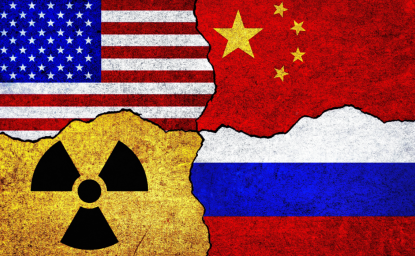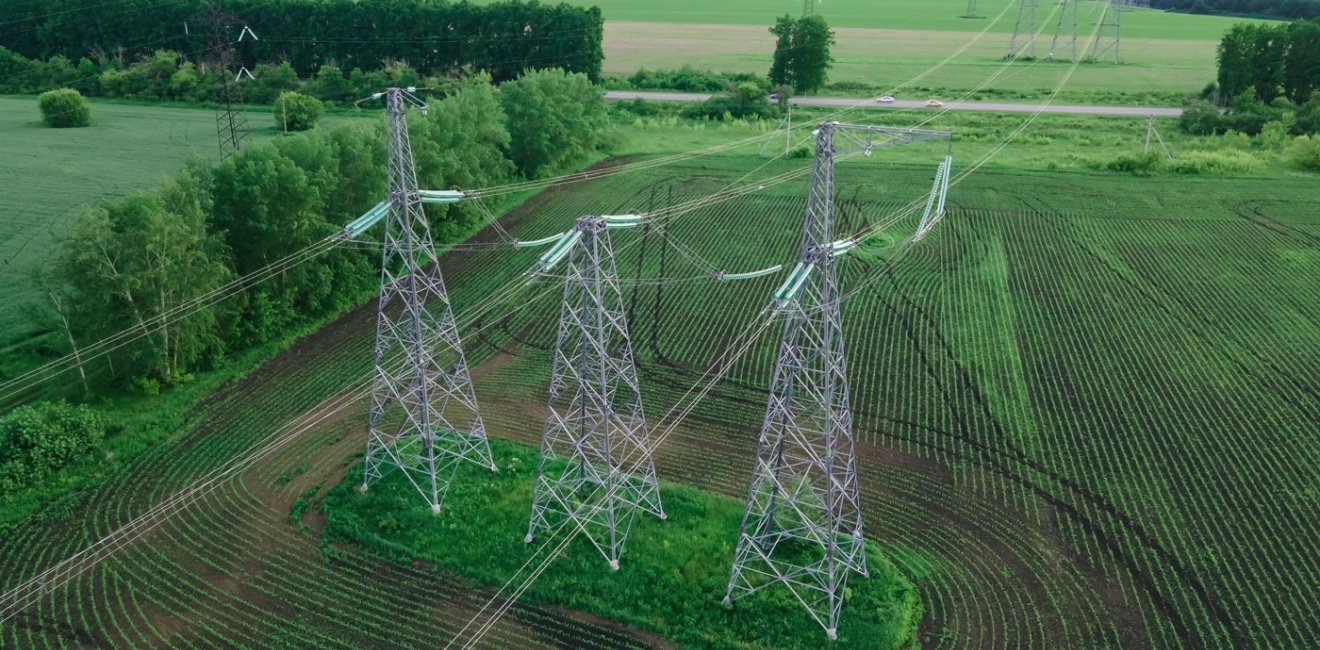The current infrastructure situation in Latin America is not favorable: the region falls short when it comes to investments. According to the World Bank, East Asia and the Pacific invest approximately 8 percent of GDP in infrastructure, while Latin America and the Caribbean invest approximately 3 percent of GDP.
The current state of the region’s physical infrastructure does not meet the development or competitiveness needs of the region and are not aligned with the expectations of its populations. Data from the World Bank indicates that current annual investments in infrastructure range from 2 to 4 percent of GDP on average, placing Latin America at a disadvantage when compared to most regions. However, the current investments vary greatly from one country to another, with the region’s average being largely driven by Argentina, Brazil, and Mexico, which account for almost 80 percent of Latin America’s GDP. Argentina spends approximately 5 percent of GDP on infrastructure whereas Brazil and Mexico spend less than 1 percent. It is worth noting that despite their smaller size, countries like Bolivia, Costa Rica, Honduras, Nicaragua, and Panama invest more than 4 percent of their GDP in infrastructure every year.
In essence there is no clear pattern related to country size or income level and the amount of infrastructure investments.
An important question arises: how much should Latin America be spending on infrastructure? Per the Inter-American Development Bank, the infrastructure gap in Latin America is estimated at around $150 billion per year. Current needs for investment in infrastructure are recommended to be between 4-8 percent of its GDP. Expert opinions vary but the general agreement is that there should be investments in infrastructure that amount to at least 4-5 percent of regional GDP. Unfortunately, these estimates do not indicate the most efficient way to spend these investments in order to maximize growth. Understanding this requires a deeper look at the current state of the region’s physical infrastructures.
The current state of the region’s physical infrastructure does not meet the development or competitiveness needs of the region and are not aligned with the expectations of its populations.
Let’s begin by looking at the region’s water and electricity infrastructure. With around 94 percent of households having access to drinking water, Latin America is doing well when compared to other developing regions. However, there are still areas for improvement. According to the World Bank, around 20 million homes still lack access to drinking water, most of these are found in rural areas and concentrated across six countries: Brazil, Colombia, Ecuador, Haiti, Mexico, and Peru. According to the Inter-American Development Bank, the proportion of the rural population with access to piped water is approximately 55 percent, while less than 10 percent of the rural population has access to sewage systems.
In general, water access has been growing in the region, however quality and safety of water remain an issue, especially with regard to sewerage access and wastewater, of which only 30 percent is being treated. This situation is disconcerting, as it is not up to par with the levels of income and urbanization Latin America has experienced in recent years.
Electrical infrastructure is also doing relatively well with around 96 percent of households having access to electricity. Furthermore, electricity has the potential to become one of the region’s competitive advantages as it’s one of the cleanest in the world, based on hydroelectricity. Overall, access to electricity is above average when compared to other developing countries, where access is around 86 percent. Access remains challenging in rural areas with more than 50 percent of those without access being concentrated in Haiti, Guatemala, and Peru.
However, Latin American countries must pay special attention to diversifying its energy sources– from hydroelectric to solar and wind—to face the growing uncertainty of precipitation caused by climate change, and the added pressure from advocacy groups pushing for alternative energy. As a result, the region has seen rapid growth in solar energy with countries like Argentina, Brazil, Chile, and Peru implementing concentrated solar power plants for large-scale electricity production. Similarly, investments in onshore wind energy production have been growing since 2008, mainly in Brazil, Chile, Mexico, and Peru, and on a more modest scale in Colombia, Ecuador, Uruguay, and Central American countries.
Transportation infrastructure is perhaps one of the region’s most notable weaknesses. According to The Economist, Latin America confronts serious problems in this area: it lacks a dense transportation network, exacerbated by the region’s low population density; additionally, its paved road density is quite low, as is the quality of the existing roads.
However, urban transportation performs somewhat better. During the last few decades significant investments have been made in large-scale public transportation systems, especially in the most densely populated cities, most of which now have multiple modes of public transport. One example is Medellin’s metro system, which provides an overall efficient public transportation option to one of Colombia’s most populated cities. The subway system in Chile’s capital Santiago, also stands out due to its extensiveness (87 miles long with 136 stations), modern infrastructure, and an annual ridership of more than 670 million users. However, even in those cities where transportation systems exist, there are challenges with congestion and lack of accessibility due to sharp population increases in urban centers.
When it comes to the integration of different transport modes, especially rail and road, Latin America faces tremendous challenges that decrease its competitiveness in logistics.
Airports are also underperforming. Historically, the region’s airports were better than those of other developing regions, but they have fallen behind due to both a lack of investment to expand and modernize the airports, and an increase in passenger demand brought forth by a growing middle class. For example, Brazil has seen a huge increase in airport traffic; in order to keep up with the increasing demand São Paulo Guarulhos Airport will increase its 30 million-passenger capacity to 60 million by 2025 by modernizing and expanding its current terminals, which are estimated to need investments of over $4 billion USD.
Ports have shown some improvement as evidenced by greater connectivity to global shipping networks. The United Nations Conference on Transportation and Development’s 2020 liner shipping connectivity index indicates that the Manzanillo port in Panama, the Cartagena port in Colombia, and the Manzanillo port in Mexico all stand out in terms of multimodal connectivity. However, the World Bank has pointed out that in order for ports to increase their competitiveness, access roads would need to increase by around 15 percent within 50 kilometers of ports in the next decade to keep up with the expected regional trade volumes.
When it comes to the integration of different transport modes, especially rail and road, Latin America faces tremendous challenges that decrease its competitiveness in logistics. Overall, statistics show that roads and ports in the region have improved marginally over the past decade, and railroads have not improved at all, placing it at the same level as sub-Saharan Africa. According to the United Nations Economic Commission for Latin America and the Caribbean, Latin America has approximately 76,000 km of rail tracks for an area of 20 million km, and Africa has 84,000 km of rail track for an area of 30 million kilometers. Argentina has the largest rail network in the region, with almost 37,000 km while Brazil, despite being the largest country of the region, has around 30,000 km of track, of which 9,000 are out of operation due to lack of maintenance and an overall abandonment of these transport structures.
In terms of digital infrastructure, improvements have been made but the region continues to face supply and demand constraints to achieve a complete digital transformation. The digital divide in Latin America is palpable, with the majority of its rural population having no internet access. Countries like Cuba, Nicaragua, and Guatemala have particularly low numbers in terms of mobile service coverage and broadband connectivity. The need for better connectivity has quickly become a pressing issue in the region after the COVID-19 pandemic increased the demand for better internet access and wider coverage for those working from home. It is an imperative for Latin American countries to invest in 5G networks, private networks, data centers, and fiber optics in order to expand connectivity into rural areas. In 2021, Brazil, Mexico, Chile, Colombia, and the Dominican Republic established their intention to adopt 5G technology, but doing so will require high upfront capital costs and sustained investments in fixed infrastructure in challenging terrains such as the Andes mountains and the rainforests.
Under these circumstances, to whom should Latin America turn for support? Over the past decade, many Latin American countries have turned to China’s Belt and Road Initiative, or BRI. Latin American exporters see opportunities to benefit from greater connectivity, with the BRI having the potential to reduce shipping times and trade costs. According to experts, it could also increase agricultural, mining, and manufacturing exports from one to almost 8 percent in at least five Latin American countries. In order to reap such benefits, Latin America must focus on the implications for the infrastructure sector. Countries like Chile are already exploring synergies with the private sector to develop infrastructure projects, as evidenced by the cooperation agreement between China Railway Group Limited and Chilean developer Sigdo Koppers. That said, China’s recent economic slowdown will limit the resources available to commit to the country’s foreign policy, which could leave Latin America with narrower infrastructure investments from China.
In order to counteract the initiative from China in the Latin American region, President Biden has sent delegations to Colombia, Panama, and Ecuador, to discuss the “Build Back Better World” global infrastructure investment initiative. This could help catalyze much needed infrastructure development projects and investments in sectors like communication technologies. Additionally, the United States is part of the Partnership for Global Infrastructure and Investment, an effort by Group of Seven to collaborate in the funding of infrastructure projects in developing countries and a response of the member countries to China’s Belt and Road Initiative.
How can Latin America achieve these improvements? In the past, most of the countries in the region have turned to public-private partnerships, or PPPs, for infrastructure investments. In 2021 Latin American countries secured more than $18.6 billion across 56 projects from private investors, becoming the region with the second largest investment commitment in infrastructure. In 2021, Brazil received US$15.7 billion of private investment commitments across 36 projects, which represents 84 percent of the region’s PPPs for that year. Mexico received US$1.1 billion in PPP investment commitments across six projects. A successful example of a PPP is that of the Atotonilco de Tula plant in Mexico, which treats water from the valley of Mexico. More than 50 percent of the plant was funded by the private sector and is operated by a private consortium. However, not all of these partnerships are successful, as shown by construction firm Odebrecht, which secured contracts by making low bids and then renegotiated them by pushing up the costs, all while bribing politicians. Thus, policymakers in the region must pay special attention to transparency and discouraging corruption and red tape in the development of public-private partnerships.
Another important source of funding is China. The Economist reported that in 2018, Chinese banks invested more in Latin America’s infrastructure than the World Bank. According to the UN Economic Commission for Latin America and the Caribbean, this financing has been mostly provided through the China Development Bank and China Export-Import Bank. For example, in 2017, Chinese firms invested around $21 billion in Brazil, and Bolivia has a line of credit with China of about $10 billion to spend on hydroelectric dams and motorways. Overall, China’s growth in Latin America has been increasing rapidly since 2000, and most recently it was evidenced by the country’s support of the region in fighting against COVID-19, supplying Latin America with millions of vaccines.
Multilateral development banks have also been important sources of funding in infrastructure projects in the region. Accordingly, Latin American countries have turned to the World Bank, the Inter-American Development Bank, Development Bank of Latin America, and the Central American Bank for Economic Integration, for the majority of their lending needs. While the stock of multilateral debt has grown in real terms, this growth has not been linear over time but rather in growth spurts, rising as a result of crises. According to UN Economic Commission for Latin America and the Caribbean, multilateral debt grew at an annual rate of 1.8 percent until 2003, then debt stocks declined until 2007, and have been increasing since 2008 when the global financial crisis created a surge in the demand for multilateral debt. However, relative to private debt, multilateral debt has decreased in the region. Furthermore improvements in the region’s macroeconomic conditions and low-interest rates since 2010 led to an increase of commercial bank lending to the public sector.
In sum, Latin America’s infrastructure is not on par with its growing upper-middle income population and the expectations of economic growth. Investing in infrastructure is essential to the region’s economic growth, to reduce inequality, and to achieve sustainability. So, how can the region move forward? The region has tremendous potential, especially given its experience with public-private partnerships. Latin America has the means to improve its infrastructure, but first it must work on prioritizing its investment needs and goals, on improving the efficiency of public spending, and on attracting cost effective funding via transparent PPPs and through local or international commercial lending. In doing so, Latin America can become more strategic in allocating it resources for infrastructure improvements and achieve a level of infrastructure that can contribute to sustained economic growth.
Author

Professor of International Business and Executive Director for the Americas, College of Business, Florida International University

Wahba Institute for Strategic Competition
The Wahba Institute for Strategic Competition works to shape conversations and inspire meaningful action to strengthen technology, trade, infrastructure, and energy as part of American economic and global leadership that benefits the nation and the world. Read more

Explore More
Browse Insights & Analysis
US Inaction Is Ceding the Global Nuclear Market to China and Russia

Promoting Convergence in US-Brazil Relations




